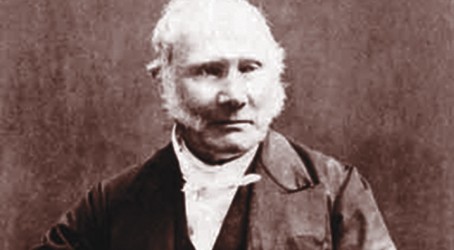Articles
The Reverend Dr Robert Stirling was only 26 years old in 1816 and had just been ordained to his first parish when he came up with a rather remarkable invention.
This was the external combustion heat engine working on a closed regenerative cycle. It was so far in advance of contemporary scientific knowledge that it was more than 30 years before anyone could really understand how it worked.
Stirling patented his design in November that year. As well as describing the engine, the patent also covered the construction and use of a regenerator, or “economiser” as he named it – a totally novel invention that extracted heat from the air as it passed from the hot to the cold parts of the engine, returning it to the cold air as it returned to be reheated. This allowed the machine to deliver more power output from the heat supplied. It also anticipated some of the potential applications of the engine, including glass furnaces and iron smelting.
The first known use of the Stirling engine dates to 1818, when one was employed to pump water at an Ayrshire quarry. It worked well for two years until the cylinder cover became overheated. Another engine began working at a foundry in Dundee in 1843. Again, this worked well for a couple of years until the cylinder bottom burned out. This was replaced three times over the next two years, after which time the owner seems to have given up on it.
This recurring issue, due to the lack of sufficiently heat-resistant materials at the time, was one of the main barriers to the Stirling engine becoming commercially successful at that period.
The engine’s inventor had been born in 1790 at Cloag Farm, near Methven in Perthshire. He was one of eight children in a family with a strong engineering background – his grandfather, Michael Stirling, was the inventor of the first rotary threshing machine. This family involvement with engineering continued in Robert Stirling and his brother James, a civil engineer. Four of Robert’s sons were also involved with engineering, mainly as railway builders.
Robert had a workshop adjoining his manse, and as a keen student of science he was awarded an honorary degree by St Andrews University in 1840. He died in 1878.
After his death, a second burst of interest in Stirling’s invention did not follow until the late 1930s, when Professor G Holst and a large team of scientists at the Philips research laboratories began investigating the engine. It is said that Holst was intrigued by the difference between the engine’s overall thermal efficiency, of less than 1%, and its theoretical potential efficiency of nearly 50%. The spur for the research was to provide a means of generating electricity for wireless receivers in rural areas without mains electricity, and where batteries were expensive or difficult to obtain.
The Stirling engine was one of a number of possibilities that were investigated, but was the solution that eventually made it into production because of several significant advantages – it was quiet, it would run on almost any heat source, and it created no electro-magnetic interference.
By the time the Philips engines made it into production, however, developments in valve technology meant that they were no longer required for their original purpose. They were well regarded as impressive pieces of engineering, however, and a number of the engines made it into university laboratories around the world, inspiring future generations of engineers to investigate the invention’s possibilities.
Today we are seeing another wave of interest in this almost 200-year-old engine. Engineers are investigating a wide range of potential applications, from cars to nuclear power stations. One of the most significant is electricity generation from solar energy.
The potential for solar-powered Stirling engines was proposed as long ago as 1872. At that time John Ericsson built a solar motor using a parabolic mirror to concentrate the sun’s rays on the lower end of the cylinder of a Stirling engine. Now electricity is being generated in the same way.
The Stirling engine is also being used for micro combined heat and power plants, where it generates both electricity and hot water at the point of use.
